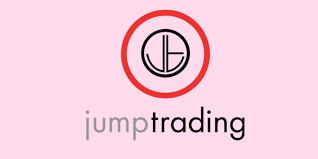Can cross-chain open the application new track? The project side revealed these new developments.
On June 30th, ChainNode (Chain Node) and Chainge held the Chainge Technology Salon in Shanghai with the theme of “cross-chain: technology and new opportunities”. On the day of the "Wan Chain Interconnection – Cross-chain Technology Application New Track" technology round table, IRISnet founder & Cosmos China head Harriet, Nervos co-founder Lu Guoning, than the original chain chief architect James, ChainLink China community leader Brothers and other guests combined with the progress of their own projects to bring you a wonderful interpretation of cross-chain technology, the host of this round table is Liu Yi, a partner of Random Capital.
The core points are as follows: 1) Many projects are said to have oracle function, but they can only serve their own chain, which is a hard injury. 2) Chainlink is so hot that it has a lot to do with cross-chain oracles. 3) Although the cross-chain technology is hot, running in a real production environment is still an open issue. 4) Cosmos's first Slash incident was not a network security issue. It actually proved that Tendermint's PoS protocol is really advanced. 5) Bystack divides the blockchain into three layers, and advances the technology through demand, which promotes the large-scale application of DAPP. 6) Nervos focuses on layered architecture networks and promotes DAPP development by supporting Layer 2.

(From left: Liu Yi, Lu Guoning, Harriet, James, Sister)
- Dialogue Jameson Lopp: My two things with Bitcoin
- Demystifying Chainalysis, tapping your privacy is their job
- A Dapp market with a total transaction volume of $11.1 billion in stock | 2019 data report for the first half of the year
The following is an excerpt from the dialogue, Babbitt finishing:
host:
IBC is Cosmos's highest priority task, and the first transaction was implemented last year. Can Harriet introduce the current progress? Have you encountered any difficulties?
Harriet:
The implementation of IBC is a very technically challenging task. In fact, we completed a prototype in the first half of last year. However, in the distributed environment verification of the test network, we found that we need to do a lot of optimization on the consensus layer, so last year I was based on IBC. The underlying Tendermint consensus has been updated with code.
IBC's technology implementation is now smooth, but IBC can run not only to complete technology development, but also to deploy multiple collaborative roles in a distributed open environment and the economic incentives between them.
Economic incentives to achieve this, we are still relatively early, how to ensure that in the decentralized distributed environment, the information packets in the process of cross-chain transmission, can guarantee that the evil can be punished at the protocol level, while at the same time Assignment is also an interesting question. Cosmos Hub and IRIS Hub We have many interesting explorations in exploring multi-hub collaboration. For example, we use the method of billing between networks such as cross-border roaming to define the distribution of benefits.
We are very much looking forward to the completion of the internal test at the end of September this year. I hope that at the end of the year, I will let everyone see that IBC can really run. host:
Cross-chain technology has been so hot, but in fact, how to run in a production environment is actually an open issue, and we will remain patient. The second question is for the singer, Chainlink is a member of the Polkadot family. Is it a cross-chain Oracle or a multi-chain oracle, let us introduce it?
Article brother:
In the future, after the Polkadot main online line, Chainlink will work with Polkadot to develop the strategy of the oracle, because the details have not been disclosed, I am not very clear.
host:
Chainlink is an early project to make a cross-chain oracle. The oracle is actually quite a lot. Do you think that Chainlink is so hot and it is related to the cross-chain predictor?
Article brother:
There is a relationship. Many projects say that they have a predictive machine, but they can only serve their own chain. This is a bad injury. Chainlink can be connected to any blockchain. After the connection, each blockchain will have a predictive function. In other words, Chainlink is no competitor. Everyone wants to cooperate with us because it is a win-win relationship.
host:
We know that Cosmos has SDk and Polkadot has Substrate. So how do you develop DAPP in Nervos and the original chain?
Lu Guoning:
Nervos focuses on a layered architecture network, and Layer 1 supports Layer 2. To do Layer 2 is not to wait until Layer 1 is done to consider how to do it. In fact, there are already a large number of Layer 2, especially in the second half of 2018 to 2019, there are already a large number of Layer 2 teams trying to pass through like lightning network, These technologies, such as payment channels, solve the problem of assets from Ethereum to their sidechains to do their own DAPP.
If you want to briefly understand how to do applications in Nervos, I would rather describe it as how we can enable applications that support Layer 2 applications like the Ethereum to increase the performance of Layer 2 applications by ten times, and the access threshold is ten times simpler. . So for us, Layer 2 is our DAPP. James:
Bystack divides the blockchain into 3 layers. Layer1 is already online. We have made it customizable in Layer2 and can have different configurations to meet the needs of different DAPPs. Our core is Layer3, which is a middleware that translates the logic of the blockchain into logic that the traditional Internet industry can understand, such as the API, to call them.
Layer 2 will go live on July 20. Our next year will help some traditional companies develop applications on Layer 2 and Layer 3. When the enterprise uses it, they can find some defects on Layer 2, or the requirements on Layer 3. These requirements will push back our technological advancement, in this way the blockchain is truly integrated with the physical application, which is a way we push DAPP. host:
On the morning of June 30, Cosmos had a node for the first time in the Slash incident. What is Cao’s evaluation of this matter? What development will follow?
Harriet:
One of the most important security aspects of Cosmos's SDK is the Slash penalty mechanism, which captures the evil factors from the protocol layer. As long as you do evil, you will take you off the line from the protocol level and will give you the right to vote. You have a big financial penalty. This ensures that each node will configure and operate its own nodes in the safest way for its own economic incentives.
So after this news came out, people who couldn’t understand were a little scared. What security problems did the network have? In fact, this proves the advanced nature of Tendermint's POS implementation, like double signing, not online or out of junk. Although a node does not affect the network consensus, it will still be recognized by the protocol, thus giving corresponding punishment. Slash is a very important innovative contribution of Cosmos to POS in the blockchain practice. host:
I personally feel that this matter is still open to question, because behind this incident, there are two machines running at the same time, and then signed at the same time. We can't really know on the network that the meaning of the node behind it is good or bad. For example, the double sign like this is obviously the stone hitting the stone, that is to say it is still far from 33%, so it is said in the Slash rule. Can you be humanized above?
Harriet:
Cosmos's security requirements are very high, and it is hoped that each node will regard it as its first priority, so the penalty mechanism is very strict.
Another feature of the Cosmos ecosystem is that there can be multiple cross-branched Hub Hubs, each of which can develop the network in a way that it believes to be better.
IRISnet We hope to gradually strengthen the punishment after the nodes become more familiar with the network functions. For example, IRISnet's Slash is now relatively gentle, the most serious double penalty is 1%, and then other mistakes are not penalized tokens, but there are different levels of Jail can not participate in the consensus. Because we consider the early days of the network, many of the certifier's nodes are actually slowly getting familiar with the network. And the chances of actually hitting 1/3 of the nodes at the same time are very small.
But as IRISnet has been online for 4 months, we are also raising the threshold. Now a chain motion is going on to increase the penalty. As a developer we made this motion, and we are calling on the verifier node to agree to add difficulty to ourselves. It turned out that in the past two days, if 50% of the time nodes are not online, they will be fined for one day. We will now raise the threshold to more than 70% of the time online, and in addition to double signing, after a certain period of time, it will start a small fine of 0.03%, which is to let everyone realize that the node not only has power and benefits, Maintaining node security and high reliability is the first element of a high-value network.
We will continue to update Blocking; if you have any questions or suggestions, please contact us!
Was this article helpful?
93 out of 132 found this helpful
Related articles
- QKL123 Encrypted Assets Market Daily (July 01)
- Getting started with blockchain | What is fragmentation?
- Before the "Ten billion funds" PlusToken crash, users recharge their faith every day.
- Blockchain Weekly | 25% down in a single day, is the bull market ending?
- Why is the blockchain far beyond people's imagination?
- Winter is over, is spring still far behind? 10 pictures review how the cryptocurrency in the first half of 2019 came out of the trough
- The gathering of the public coffee, the Ethereum Technology and Application Conference was held in Jingsheng University






